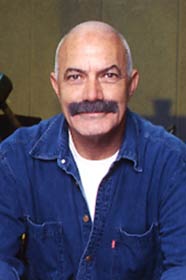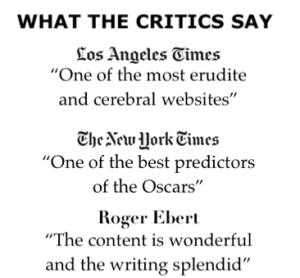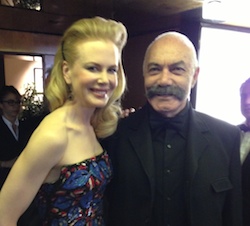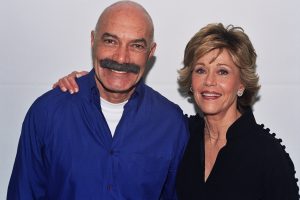Deconstructive Musical
Stylistically, “Safe” is marked by deliberate pacing, confined settings, and minimalist design, all devices that are polar opposites to those that define Haynes’ next feature, “Velvet Goldmine,” which is excessive, energetic, and highly stylized. Made in 1998, Velvet Goldmine is Haynes’ most visually flamboyant and textually dense film but also his most problematic.
Again showing interest in reconstructing cultural history and highlighting the ideological importance of pop icons, Haynes made a radical shift in direction. The deconstructive musical Velvet Goldmine stars the then young and promising British thespians, Christian Bale, Ewan McGregor, and Jonathan Rhys-Meyer.
Set in London, where it was also shot, the film is an intentionally unstructured tribute to the glam rock era of the 1970s, drawing heavily on the histories and mythologies of such glam rockers as David Bowie, Iggy Pop, Lou Reed.
“Velvet Goldmine,” like “Poison,” was inspired by a major gay artist, Oscar Wilde. The opening scene shows how the baby Oscar Wilde is delivered to his parents’ doorstep by a spaceship. Starting with a quote from Wilde, seen by Haynes as sort of the spiritual godfather of glam rock, “Velvet Goldmine” revels in the era’s gender politics, experimentation with identity, and fashionable bisexuality. The movie chronicles the power of glam rock as a form of self-expression for both heterosexual and homosexual youths. As an avenue of escape, glam rock served similar functions of other transient fads and fashions.
Shaped as sort of a mystery drama, “Velvet Goldmine” follows Arthur Stuart (Christian Bale) a British journalist enraptured by glam rock as a teenager, who returns a decade later to hunt down his former heroes. They are Brian Slade (Rhys Meyers), a feather boa-wearing androgynous who bears the alter ego of “Maxwell Demon,” and resembles David Bowie in his Ziggy Stardust incarnation, and Curt Wild (Ewan McGregor), an Iggy Pop-style rocker.
The glam rock star Brian Slade stages his own death onstage while performing, when a shot is heard and he falls to the ground covered with blood. However, when the act is exposed as a hoax, it marks the end of Slade’s stardom. A decade later, in 1984, the British reporter Stuart, who had witnessed the hoax murder, requests and gets an assignment to do an investigative story. In what becomes an obsessive interrogation, Stuart visits the wheelchair-bound Cecil (Michael Feast), who discovered Slade. He then tracks Slade through his early life and his initial encounter with outrageous, maniacal American singer Curt Wild (played by McGregor with an incoherent accent). We also meet Slade’s manager Jerry Divine (British comedian Eddie Izzard) as he moves in to take over the performer’s career.
In a scene lifted out of “Citizen Kane,” Slade’s former wife, Mandy Slade (Toni Collette), is interviewed by Arthur in a dark nightclub, and she recalls in a voice-over flashback their initial meeting in 1969 at the Sombrero Club. It comes as no surprise that their marriage parallels his Bowie-like ascent to fame as a bisexual star pushing the limits. Idolized by teens, Slade teams up with the drug-addicted Wild. The marriage comes to an end, and Mandy claims to have not seen him in years. The reporter recreates the star’s rise and fall, climaxed by a fake on-stage murder at a London concert. In a more conventional film, the focus will be on the glamorous exploits and exotic adventures of Slade and Wild. But rather than presenting Slade’s rise to stardom directly, Haynes shows it from Stuart’s perspective, in a way that dispenses vital information about the couple in bits and pieces.
The narrative deals playfully with the facts and myths of glam rock, without intending to be an authentic portraiture of the short-lived but forceful cultural phenomenon. Slade, for example, flirts with bisexuality and lives a careless style of “decadence,” before staging his own death in a live performance. Haynes refers to Bowie’s disavowal of glam rock in the late 1970s, and his subsequent self-reinvention as an avowedly heterosexual pop star.
As noted, the text imitates “Citizen Kane” by presenting multiple contradictory perspectives on Slade’s life. However, for savvy critics and viewers, the film’s structural parallels to Welles’ 1941 masterpiece were too obvious (and pretentious, too), whereas for those not seeped in film history, they were just perplexing. Even more so than Carol’s character in “Safe,” Slade remains an enigma up to the end, when presumably he is assigned a “new” identity, since many crucial pieces of the puzzle are missing.
The film’s less successful subplot describes the affair between Slade and Wild, alluding to rumors about Bowie and Reed’s sexual relationship. Haynes adds a flashback to Wild’s enforced shock treatment as a teenager in an effort to “cure” him of homosexuality, echoing Reed’s teenage records as a victim of the homophobic culture and the rigid medical profession. The director’s critique of society’s silly beliefs and efforts to “cure” homosexuals, both forced upon the victims and/or chosen by them, also appeared in “Poison,” and it would feature prominently in Haynes’ “Far From Heaven.”
This time around, learning the bitter lessons from “Superstar,” Haynes approached David Bowie before making the film for permission to use his music. Quite expectedly, Bowie declined, leaving Haynes no choice but to use a combination of original songs from other artists and glam-rock inspired music, written specifically for the film by contemporary rock bands, including Suede.
“Velvet Goldmine” world-premiered in the main competition of the 1998 Cannes Film Festival (Haynes’ first feature to play there), winning a Special Jury Award for Artistic Contribution. (Martin Scorsese was the Jury president that year). The gifted British designer Sandy Powell received an Academy Award nomination for her costume design, and she did win the Oscar in that category the same year, but for her work on another film, Shakespeare in Love, which swept all the major Oscars, including Best Picture.
Despite fearless performances from the leads (especially Rhys-Meyers), who sang their musical numbers, “Velvet Goldmine” received mixed to negative reviews from critics, resulting in a flop. There were disputes between producer Vachon and Miramax’s Harvey Weinstein regarding the shape and running time of the final cut, which might have accounted for the film’s commercial failure. The film grossed a tiny fraction, about $1 million at the domestic box-office, of its considerable $10 million budget.
A tweener, “Velvet Goldmine” never found an appreciative audience. Audacious viewers seeking offbeat fare and expecting a self-reflexive camp were disappointed, and rock fans did not like the movie either. Some critics also claimed that Haynes had miscalculated with the music, using “too much” of it, and in a mode that was not well integrated into the narrative. Moreover, some of the songs are grating and their excessive rendition through montage is unappealing.
In hindsight, “Velvet Goldmine” is Haynes’ most disjointed film. The narrative’s layers over layers made it difficult to get involved with any of the characters. Stuart is forced to examine his own adolescent fascination with glam, confused or unclear sexuality, and brief affair with Slade’s muse, American rock star Wild. The journalist’s coming out subplot is superfluous, and for a bold director such as Haynes sort of déjà vu. Haynes seems more interested in Arthur, the reporter whose life was shaped by glam-rock, than in the other men, though Arthur is too staid to qualify as an interesting dramatic persona.
For me, “Velvet Goldmine” is Haynes’ least satisfying work, a film of some brilliant moments that do not add up to a coherent whole. Haynes scored a huge coup in casting the three leads with extremely talented and attractive actors, just before they became stars: Christian Bale (before “Batman”), Ewan McGregor (before “Moulin Rouge”), and Jonathan Rhys Meyer (before “The Tudors”). All three have loyal following with younger viewers, particularly gay men. This is particularly the case of McGregor, after appearing in Danny Boyle’s cool drug-themed “Trainspotting” and showing off in full frontal nudity in Peter Greenaway’s intellectual-erotic puzzle, “The Pillow Book” (both in 1996).
Despite major shortcomings, “Velvet Goldmine” indicated that Haynes was an original director who makes personal and iconic pictures that are not easily classifiable or marketable. This might explain the director’s motivation behind his next feature, “Far From Heaven,” which became his most accessible feature to date.
Credits
MPAA Rating: R
Running time: 123 Minutes.
Directed and written by Todd Haynes.
Released: November 6, 1998.
DVD: May 18, 1999
Cast
Ewan McGregor as Curt Wild
Jonathan Rhys Meyers as Brian Slade
Toni Collette as Mandy Slade
Christian Bale as Arthur Stuart
Eddie Izzard as Jerry Divine
Emily Woof as Shannon










